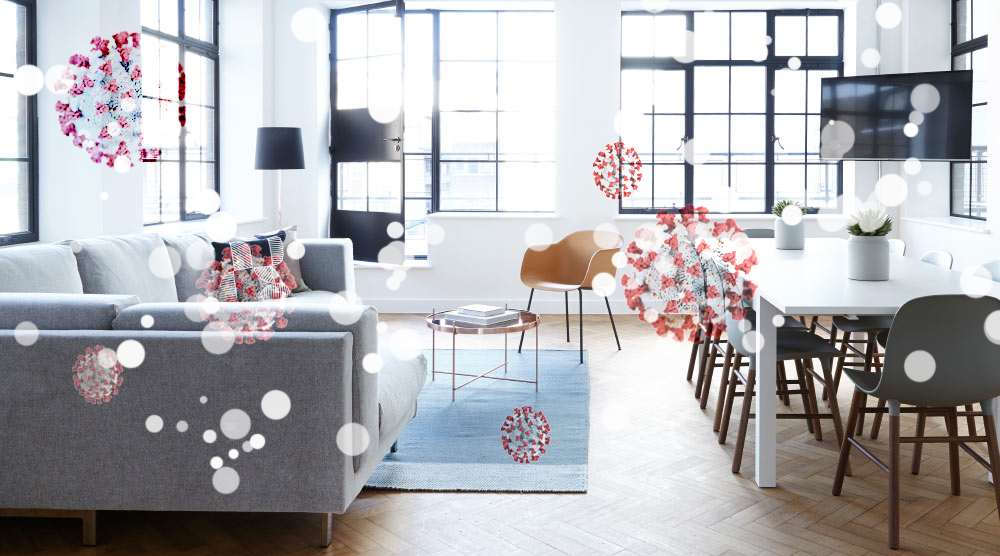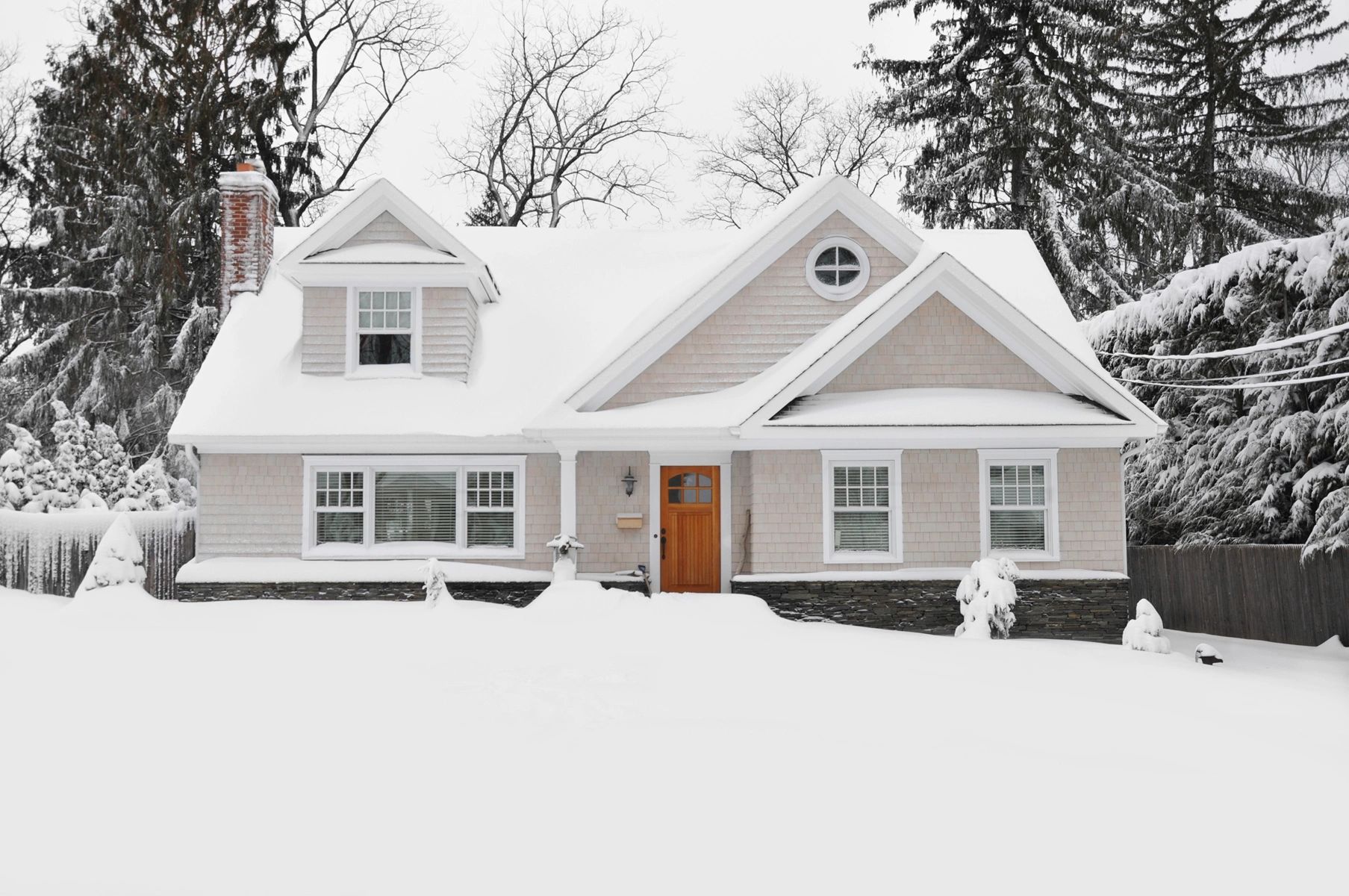Over the past six months, we have all been affected by the COVID-19 pandemic. As with most fast-moving crises, there is a high degree of uncertainty when attempting to understand the cause, remedy, and best path forward. We have all experienced confusion as to how to best protect ourselves, what the most effective health remedies are, and of course, we have had to deal with the risk and fear of us unknowingly infecting a loved one. To date, scientists have mostly focused on human interaction, which is a logical focus, since the virus is transmitted from person to person. However, based on our experiences as heating ventilation and cooling (HVAC) engineers, we believe a major contributor to the transmission of the virus may be our modern HVAC systems and the existing shortcomings with our indoor air quality (IAQ). Like the fleas who ultimately were deemed responsible for the Bubonic Plague, we believe our modern HVAC systems, through various known shortcomings and the laws of Physics may be a major catalyst for the modern plague, COVID-19. If we acknowledge this problem through investment and new diligence by all citizens, we can avoid the economic dislocation and social upheaval associated with this pandemic while hardening our building indoor air quality for the future.
To date, strategies to manage COVID-19 have focused on how to mitigate community spread, often with personal protection equipment (face mask) and administrative controls (e.g. stay at home orders). Though we in the Northeast have seen success from this strategy, the success maybe fleeting if we do not recognize the role of our environment and, more importantly, how humans react to the environment during the spread of viruses. In addition, the increase in cases we are currently observing in the South and West of the United States may have a lot to do with weather patterns and human reactions to said patterns. As discussed in this essay, understanding the relationship between humans, the environment, and the virus may offer a better path forward and give our country steps to mitigate and minimize future human tragedy and economic dislocation from future pandemics.
Conditions for Spread of COVID-19
It has long been known in the engineering community that infections will propagate with certain indoor air conditions. The driving factors for poor infection control are:

Some Background: The HVAC industry (Heating Ventilation and Air Conditioning) has long known that relative humidity is a decisive factor in a virus’s ability to transmit and propagate. As the chart below shows, which has been in engineering textbooks for at least the early 1980s, between 40% and 60% Relative Humidity (RH), viruses have a low ability to propagate. Further note that this is true of bacteria, bronchial infections, and other irritants and other maladies. Truly, humidity and the control of relative humidity is an important factor in our health and well-being.
What is not well known, typically by the greater public, is the effect that warming air (i.e. heating of air inside of buildings) has on the relative humidity of the indoor air environment. As air is warmed, its ability to retain water is increased, thus lowering the relative humidity of the air. This creates the perfect environment for viruses to expand and propagate, as evident by the chart above.
Further complicating the problem is our human HVAC system, our bronchial system. As relative humidity is lowered in buildings, our noses, throat, and lungs become drier. In addition to being an irritant, this drying effect of our bronchial system results in less resistance to viruses and bacteria. These factors result in a perfect storm. It is no coincidence that viruses are their most deadly over the long winter months in the Northeast, as we all spend more time in the warm confines of our homes and buildings.
Modern HVAC in institutional buildings have a few more challenges which are helping viruses survive and prosper. The first challenge is airflow. Too often, there is simply not enough airflow in general, and certainly not enough outdoor air to properly purge the space. As ASHRAE, the governing body for HVAC engineers, has documented, lack of airflow will allow air droplets (think COVID-19 laden air droplets) to linger in the space, exposing the occupant to a longer duration of the pathogen, thus increasing the dosage of the virus to the occupant. In addition, the reality is that a lot of HVAC infrastructure is aged and not working per original specification. To often, the lack of airflow, a suboptimal relative humidity, high density spaces, and the nature of our own personal HVAC system, make for the perfect breeding ground for this virus.
Effect of Outdoor Air Temperatures and the Spread of COVID-19
The areas hit hardest by this pandemic indicate that weather conditions may have a major impact on the spread of COVID-19. The hardest hit areas, which include nursing homes, prisons, and multi-family buildings in large cities, in our experience, too often share these common traits: high density of occupants, buildings which suffer from low relative humidity or high relative humidity (which almost every building does), and buildings which suffer from poor airflow. As the graphic above demonstrates, this is a perfect recipe for any virus to propagate.
To evaluate the effect of HVAC with regards to COVID-19, we created daily temperature trends (which is indicative of when buildings are in heating or cooling mode), as compared to the documented number of COVID-19 cases for several regions of the country. Regions which we studied include New York City NY, Philadelphia PA, San Francisco CA, Miami FL (weather for Miami, Florida Case count), and Los Angeles CA, amongst others.
The trends are shown below:
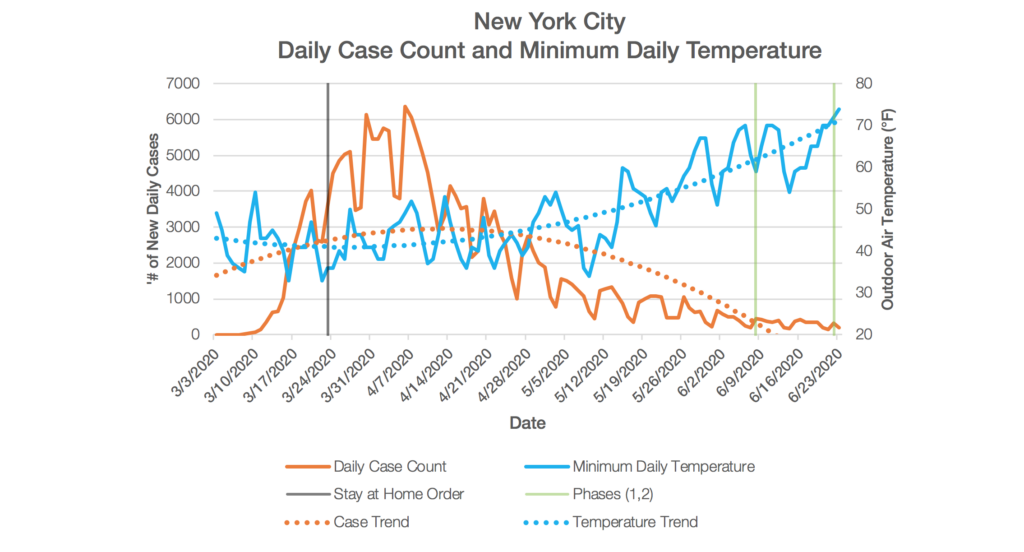
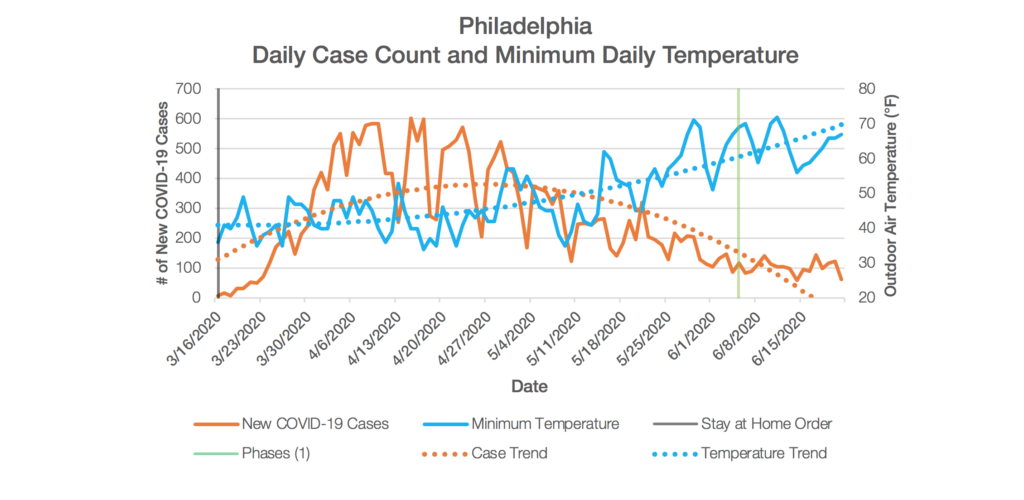

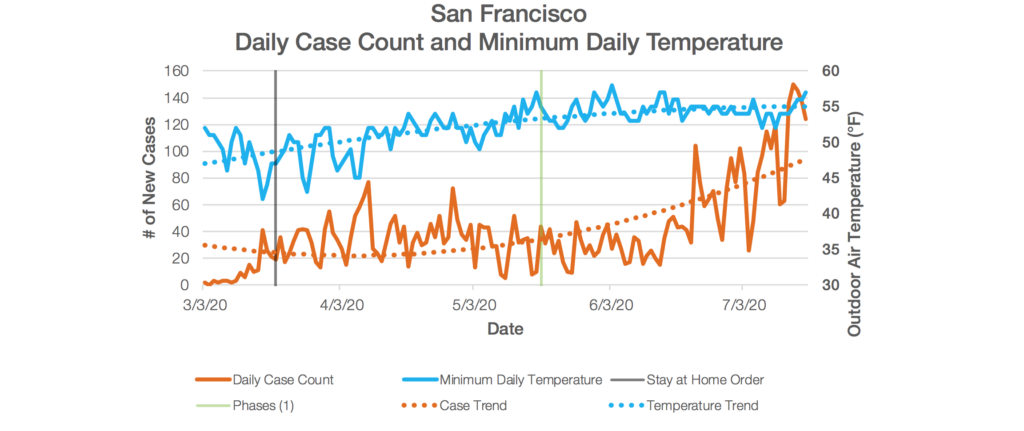
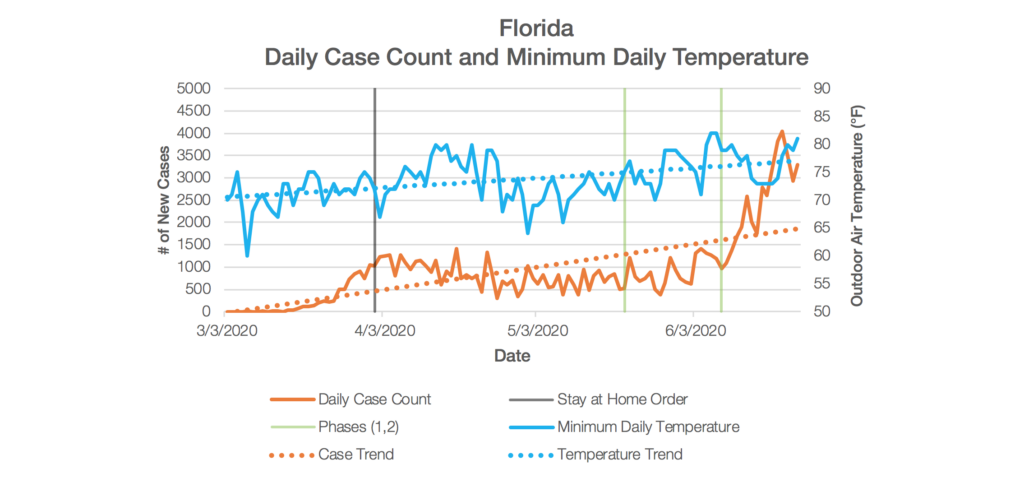

We think the trends indicate that weather conditions are a major factor in the spread of COVID-19 for a number of reasons:
- As the outdoor air temperature (for the Northeast) rises, heating systems are naturally shut off.
- This act will trigger an increase in relative humidity (inside of buildings) since heating of air dries out air, increased fresh air (by opening windows at home and opening dampers within buildings), and also a naturally tendency for people to go outside, which creates social distance.
- The intensity of daily cases within San Francisco (maximum daily cases of approximately 80 through winter) never came close to the intensity of NYC (maximum daily cases of over 6,000). While there are surely differences between these two large metropolitan cities, certainly San Francisco’s moderate climate is less hospitable to the spread of the virus as compared to NYC’s harsh/dry winters.
- The trends for NYC, Philadelphia and Albany (NY) are very similar. This may indicate that regardless of differences in early intensity (NYC was first to experience spike), and differences between state distancing guidelines and timing weather patterns maybe a great predictor in flattening the curve.
- The trends for Los Angeles and Florida are still climbing upwards (as of July 2020), rather than peaking like the Northeast cities and San Francisco did in recent months. This may be because as we approach early summer, the uncomfortable conditions of the outdoors in the south are pushing people back into buildings, where the conditions we discussed above (poor RH control, poor air circulation, and high occupant density) maybe triggering increase in positive cases for this region of the country.
A Path Forward
In summary, the importance of the role of environmental conditions and human reaction to conditions is important for the following reasons:
Where do we go from here? We recommend a new path forward, one in which we address Indoor Air Quality, which, in addition to mitigating the effect of COVID-19 can have many tangential benefits (e.g. improved health in general, reduced allergies, etc.). Through improved humidity control, better filtration systems, increased airflow, and improved HVAC in general, we can reduce the intensity and fear associated with this pandemic, and help our country return to a path of normalcy.
Without a doubt, this will be an expensive task. However, with proper investment and better education of IAQ best practices, we can improve the health of our countrymen while strengthening our economy and social fabric. It took us almost a 1,000 years to get the bubonic plague under control. By investing in this new path forward, we can reduce the time period of pain, and allow us all to get back to living life and helping our fellow man to a better path forward.



